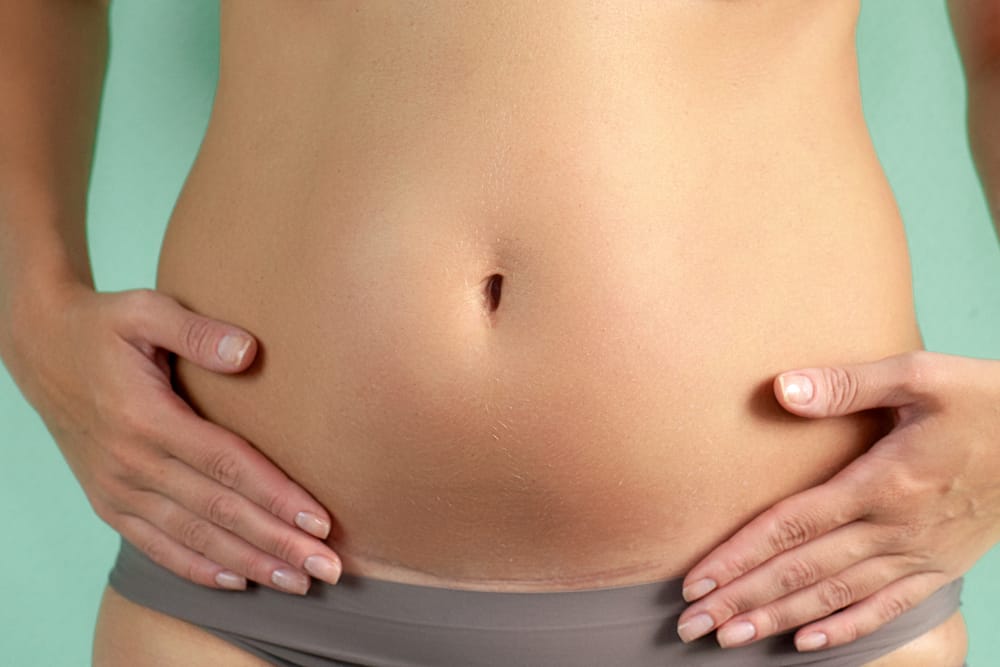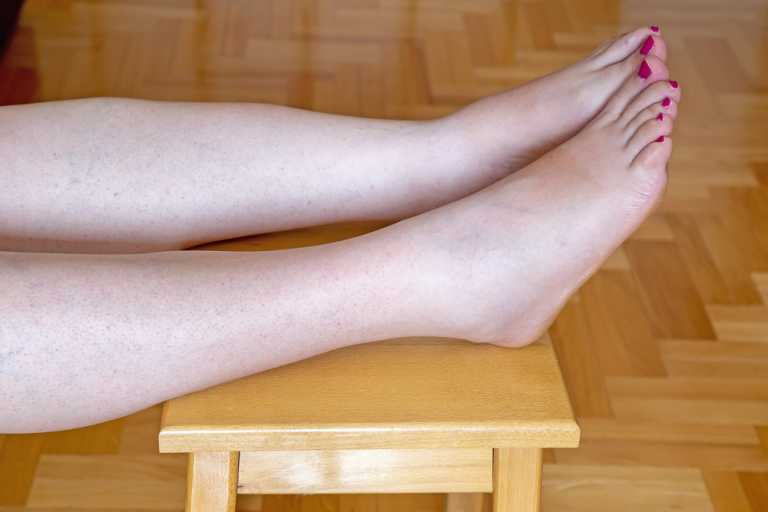Are you experiencing bloating and sharp, shooting pains after your cesarean? You’re not alone. Gas pains after a c-section are as common as they are uncomfortable.
The bad news is that you’ll be bloated for about a week. The good news is that there are lots of things you can do to help relieve the pressure and get rid of the pain.
Here’s everything you need to know about the causes and remedies, as well as when it might be a sign of something more serious.
Can Gas Cause C-Section Pain?
It may surprise you, but yes, gas is a leading cause of pain after a c-section, and you won’t be allowed to leave the hospital until you’ve passed wind.
The amount of discomfort trapped wind can cause varies. In some cases, it might be even more painful than your incision.
Why Do You Have Gas After a C-Section?
Here are the top 5 reasons why you might be extra gassy post-c-section:
- Slowed Bowel Movements
A c-section is a perfect storm for slowing down your bowel. Anesthesia, medication, and inflammation around your incision can all disrupt your bowel’s regular movements. This can cause them to slow down or stop altogether, leading to constipation, a buildup of gases, and sharp pain.
Moderate and severe cases are called postoperative ileus. It’s surprisingly common and occurs after 10-20% of cesarean sections.
- Bowel Obstruction
Very rarely, gas pains can indicate a bowel obstruction. This will bring extra symptoms like:
- Vomiting.
- Abdominal swelling.
- Constipation.
- Inability to pass wind.
- Iron Supplements
Your doctor may prescribe iron supplements to build your hemoglobin levels back up. Unfortunately, common side effects include constipation, bloating, and gas pain.
- Exercise
Spending lots of time lying or sitting in bed after your cesarean can also slow down your bowels. This causes constipation, bacterial growth, and a buildup of gas. It’s one of the reasons your doctor will try to get you out of bed asap.
- Diet
Following a healthy, fiber-rich diet is a great way to prepare for delivery and speed healing. However, if your postpartum recovery meals are full of beans, broccoli, and brussel sprouts, they could be the source of your extra wind.
This doesn’t mean you should ditch the healthy food. Instead, make changes slowly and avoid the gassiest vegetables.
What Does Gas Pain Feel Like After a C-Section?
Most women describe postpartum gas pains as sharp, shooting pains. They can range from uncomfortable to excruciating.
Gas pains can also be “referred.” This means you’ll feel discomfort in other parts of your body, not just your abdomen. It’s caused by the way your nerves perceive internal pain, which differs greatly from external pain.
For example – If you burn your finger, your brain needs to know which one it is so that you can move it. If something hurts inside your stomach, you don’t need to deal with it in the same way.
So when your intestines send out pain signals, your brain doesn’t always get a clear message about the location, just that it hurts!
Gas Pain in the Shoulder After a C-Section
35.7% of women experience gas pain in their shoulder after a c-section. This makes it one of the most common sites for referred pain.
It’s caused by physical or chemical stimulation of the diaphragm or phrenic nerve and usually affects the right shoulder.
It can be particularly uncomfortable when holding or feeding your baby. So try adding extra support with a nursing pillow.
Gas Pain in the Chest After Cesarean
Another key spot for referred gas pain after a cesarean is the chest. This can be particularly scary, as you may worry about problems with your heart or lungs.
The good news is that it’s most likely to be caused by trapped wind, but see a doctor urgently if you are also experiencing:
- Shortness of breath.
- Coughing and gasping for air.
- Palpitations.
- High Heart Rate.
- Dizziness.
- Vomiting.
These could indicate a pulmonary embolism or a cardiac issue.
Gas Pain in the Back After a C-Section
If your back is hurting after your cesarean, it could be caused by trapped wind, but there are lots of potential culprits.
Other sources of postpartum back pain include:
- Hormones – At the time of childbirth, your levels of the hormone relaxin will surge. This loosens your ligaments, which can cause instability and pain.
- Anesthesia – Both epidural and spinal blocks can lead to muscle spasms that can last weeks or months.
- Feeding Your Baby – Once your baby has found a good feeding position, you’ll be stuck there for a while. If you’re not properly supported, this can cause back strain.
Gas Pain Behind Your C-Section Scar
Of course, pain from trapped wind isn’t always referred to another part of your body. In many cases, you’ll feel it in your stomach, right behind your scar.
However, it’s not the only reason you might feel discomfort behind your incision. Other causes include:
- Uterus Contraction – As you recover from birth, your uterus will shrink back to its regular size. This usually feels like severe menstrual cramps and will stop after a few days.
- Infection – Infection can cause burning, stinging, redness, discharge, and swelling. It’s a serious complication, so get help straight away if you suspect it.
- Incisional Hernia – In rare cases, your abdominal tissue may push through your internal incision. This presents with soreness and bulging.
How Long Do Gas Pains Last After a C-Section?
It’s normal for trapped wind to stick around for about a week after a cesarean. They can last even longer if you are bed-bound, eating a very high-fiber diet, or trying not to pass wind. Yes, you may have to warn your visitors that baby cuddles might come with a side of flatulence.
Happily, there are lots of less-mortifying remedies to get rid of your gas pains.
How to Relieve Gas Pain After C Section
The most effective remedies for gas pain after a c-section are:
- Walking.
- Rocking in a chair.
- Drinking plenty of water.
- Chewing gum for 30 minutes, 3 times a day.
- Applying a warm compress to your stomach for 15 minutes. Make sure you keep some clean fabric between the heat pad and your wound.
- Drinking herbal teas, like peppermint, chamomile, ginger, or lemon balm.
- Skipping your iron tablets until you’ve had at least 3 bowel movements.
- Keeping a food diary and avoiding anything that makes you gassy, like cabbage, asparagus, and dairy.
- Eating fruits that aid digestion, like prunes, apricots, berries, and watermelon.
- Swapping your pain meds for ibuprofen.
If you’ve tried everything and your trapped wind is still causing you pain, speak to your doctor. They may be able to prescribe something to help release the gas. If you’re constipated, too, they can also recommend a mild laxative or stool softener.




